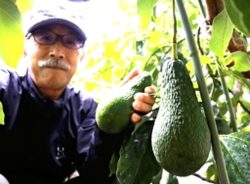13:35 JST, May 13, 2021
Life is full of humble delights, and they’re particularly enjoyable when they strike unexpectedly. The very best are those that continue to come to mind, bringing pleasure or amusement long after the initial occurrence. Probably like most people, I have a small collection of such episodes, but one especially seemed a quintessentially Japanese experience.
My husband is from Hirosaki in Aomori Prefecture and I’ve had occasion to visit there several times. Mostly we’ve gone by airplane, once by a very long car ride, and once, most recently, by Shinkansen, changing trains at Shin-Aomori Station. On the way back that time, I bought a makunouchi bento at the station before getting on the train, giving little thought to my choice. Makunouchi bento always seem a safe bet, with lots of different foods in them, so I expected to be satisfied.
What happened instead was an event that was extremely small in scale but one of the most charming and unanticipated of my life. I often think back to that bento, and every time it makes me smile. To be precise, it was not the bento per se, but the oshinagaki menu that accompanied it.
As I opened the bento, I almost didn’t notice the flutter of paper. It was a diagram showing the position of all the items with a brief description of each. It was titled in Japanese “Usual Tsugaru Makunouchi Bento Menu.” The use of “usual” seemed weirdly funny. Was it intended to lower my expectations of the contents, alerting me to the fact that it was nothing special, or was it a bit of local swaggering, insinuating that even something this gorgeous is just the norm in Tsugaru?
But there was more to come. Under the names of each of the 11 dishes was an explanation in parentheses, and these were similarly delightful. Some were mostly informative: deep-fried scallops (“Made with Aomori deep-fried scallops”); simmered vegetables (“Carrots, burdock root, freeze-dried tofu”); bulging Japanese-style omelet (“Made with high-grade eggs from the Tsugaru Peninsula”); rice (“Tsugaru Roman rice”); pickled cucumbers (“Mustard-flavored”).
Two included a mild warning: hokke broiled with soy sauce (“This is a broiled fish often eaten in Tsugaru. Be careful of the small bones”); eggplant wrapped in perilla (“A typical summer dish in Tsugaru; it’s a little salty”).
This was more information than I had ever hoped for but, you know, good to know and thank you very much!
The remaining four were boastful in a shyly understated way: golden grilled scallops (“It’s our specialty”); sushiko (“It’s a fermented dish made with glutinous rice and red perilla. The natural color is pretty”); minced squid cutlet (“It’s a minced cutlet with squid tentacles and vegetables. It’s B-class gourmet, you know”); boiled chrysanthemum (“It’s the prefecture’s specialty. The fragrance is unlike others”).
The menu struck a strange balance between pride and reticence, which I found adorably comical. But was this perhaps just … normal? I wondered whether Japanese people would react the same way, so I asked some friendly cultural informants to share their take on it. All of them found calling it “usual” and then going into such extravagant detail humorous.
But while I read the menu as an expression of slightly wacky but totally captivating pride in the bento, curiously manifesting itself in a series of rather modest comments, they focused more on the bento maker’s “sincere” and “honest” love of Aomori. The detail, too, was viewed as a “kind” and “courteous” service to the customer rather than self-praise. Similar to me, they liked the quirky, enthusiastic tone, although one informant found some of the descriptions superfluous.
A study by social psychologist R.A. Brown may shed some light on my bemused and amused response to the oshinagaki. Brown’s starting point is the fact that Japanese people typically score low on tests like the widely used Rosenberg Self-Esteem Scale (RSES), yet don’t seem to be lacking in self-esteem. Brown hypothesized that it was the strong wording of the RSES that led to the lower results. To test this, Brown investigated 101 Japanese university students’ and 38 adults’ evaluations of comments related to self-esteem from the RSES produced by two imaginary speakers.
In response to the question “Tell me about yourself,” the first imaginary speaker responded with four statements like, “I feel like I have a number of good qualities.” To the same question, the other imaginary speaker made four statements such as, “I feel I do not have much to be proud of” — RSES items considered to show low self-esteem.
The study participants rated the two speakers in terms of bad impression versus good impression; unlikable versus likeable; incapable versus capable; arrogant versus modest; and selfish versus considerate, using a seven-point Likert scale.
Out of a potential 7 points for each attribute, the first speaker received an average score over the midpoint of 3.5 only for incapable versus capable, at 3.8. The second speaker received scores higher than the midpoint for two items: arrogant versus modest (5.0) and selfish versus considerate (4.0).
Overall, speaker 1 was assessed as not as bad, not as unlikeable, and not as incapable as speaker 2, but speaker 2 was deemed considerably more modest and considerate than speaker 1. There was little difference between the evaluations of the students and the adults.
Significantly, neither speaker 1 nor speaker 2 was appraised very positively overall, although speaker 2 did slightly better.
Brown concludes that Japanese people have a critical view of both people who strongly express positive self-esteem and people who strongly express negative self-esteem. Low-key expressions may be more valued — contrary to the overblown comments typical of some Americans — on menus, social media and elsewhere. Of course, the most important thing is the bento itself. I’m happy to report it was very nice indeed, made all the more pleasing by the accompanying oshinagaki, the fond memory of which I’ll carry with me for a long time.

Kate Elwood
Elwood is a professor of English at Waseda University’s School of Commerce.
"Society" POPULAR ARTICLE
-

M4.9 Earthquake Hits Tokyo, Neighboring Prefectures
-

Israeli Tourists Refused Accommodation at Hotel in Japan’s Nagano Pref., Prompting Protest by Israeli Embassy and Probe by Prefecture
-

M7.5 Earthquake Hits Northern Japan; Tsunami Waves Observed in Hokkaido, Aomori and Iwate Prefectures
-

Tsukiji Market Urges Tourists to Avoid Visiting in Year-End
-

M5.7 Earthquake Hits Japan’s Kumamoto Pref., Measuring Upper 5 Intensity, No Tsunami Expected
JN ACCESS RANKING
-

Keidanren Chairman Yoshinobu Tsutsui Visits Kashiwazaki-Kariwa Nuclear Power Plant; Inspects New Emergency Safety System
-

Tokyo Economic Security Forum to Hold Inaugural Meeting Amid Tense Global Environment
-

Imports of Rare Earths from China Facing Delays, May Be Caused by Deterioration of Japan-China Relations
-

University of Tokyo Professor Discusses Japanese Economic Security in Interview Ahead of Forum
-

Japan Pulls out of Vietnam Nuclear Project, Complicating Hanoi’s Power Plans
























